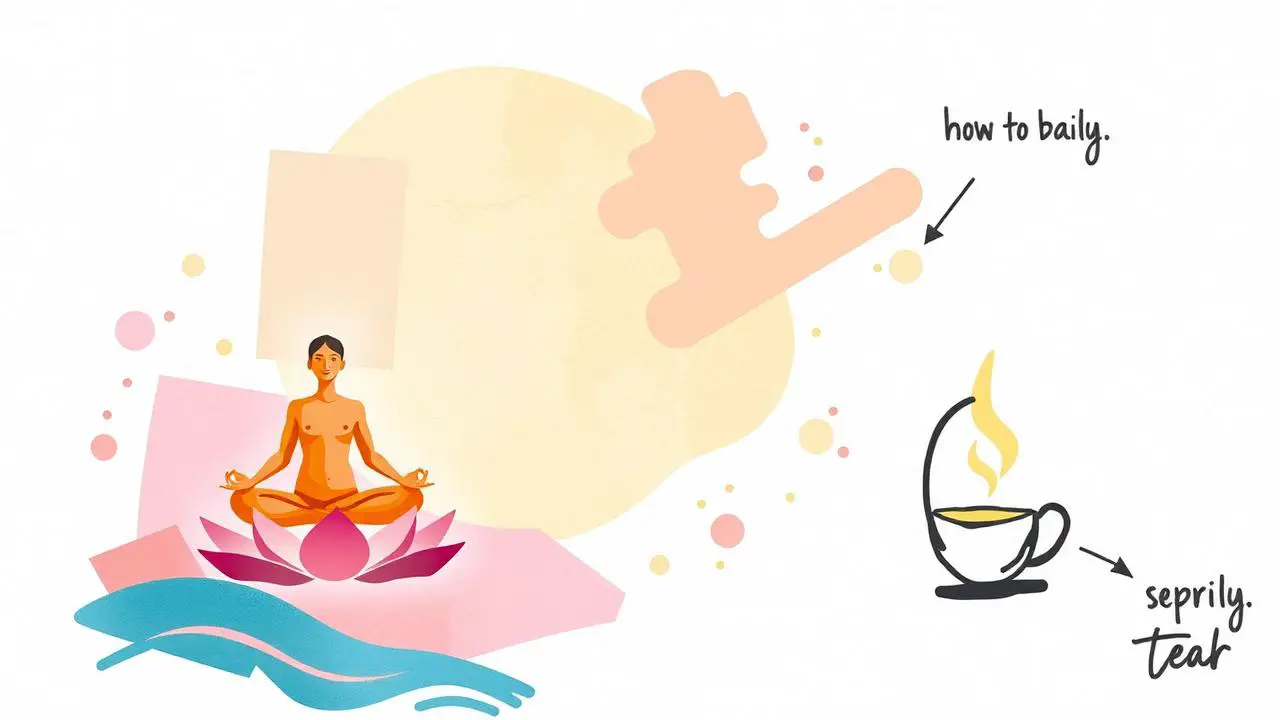Practising mindfulness is an increasingly popular way to create a sense of peace and safety in our lives. It can be a powerful tool to help us combat stress and anxiety, as well as to connect more deeply with ourselves and our relationships.
Practicing mindfulness involves being fully present in the moment and focusing your attention on your thoughts, feelings, and physical sensations without judgment. This can be done through various techniques such as meditation, breathing exercises, body scans, and mindful movement like yoga or tai chi. It is important to approach mindfulness with an open and curious mindset and to practice regularly to develop the skill.
In this article, we’ll explore what mindfulness is, how it can benefit us, and how we can practise it in our daily lives.
Mindfulness is a simple yet profound approach to life. It’s about being present in the moment, without judgement or attachment to the past or future.
Mindfulness allows us to slow down and become aware of our thoughts, feelings and physical sensations. This awareness helps us to understand ourselves better, which can lead to greater self-acceptance and improved mental wellbeing.
What is Mindfulness?
Mindfulness is an ancient practice that has been around for centuries, and is now being used more than ever to promote mental health. It is a way of focusing on the present moment and paying attention to the sensations, thoughts, and emotions you are experiencing without judgement. Practicing mindfulness can help reduce stress and anxiety, increase focus and concentration, boost overall wellbeing, and foster feelings of gratitude.
Meditation is often used as a form of mindfulness, allowing us to take deep breaths in order to connect with our inner self. By becoming aware of our breath we can observe our thoughts without getting caught up in them or judging ourselves. Additionally, meditation can help us cultivate an attitude of kindness towards ourselves by connecting with the present moment and being more accepting of our experiences.
As we become more mindful through regular practice we can start to notice patterns in our behaviour that may be preventing us from achieving optimal mental health. With this newfound awareness we are able to break these patterns and create healthy habits that support both our physical and emotional wellbeing.
Moving forward, it’s important to remember that mindfulness isn’t just about relaxation – it’s also about learning how to effectively manage difficult emotions so that we can live a life full of joy and peace. With this in mind let’s explore some examples of mindfulness exercises…
Examples of Mindfulness Exercises
Mindfulness practice is an essential part of living a conscious life. It’s a way to bring awareness to our experience, and it can be done in a variety of ways.
One of the most popular mindfulness practices is mindfulness meditation, which involves sitting quietly and focusing on your breath or bodily sensations. This type of meditation can be done anywhere at any time, making it easy to incorporate into your everyday routine.
Additionally, there are many other mindfulness exercises that can help you cultivate an attitude of presence and focus on the present moment. Taking time throughout the day to pause and observe your thoughts without judgment can help you stay connected with yourself and your environment.
There are countless ways to engage with mindfulness practice, from mindful walking to journaling to eating mindfully. Whatever exercise you choose, remember that it’s important to take the time for yourself and create moments for stillness and connection with yourself.
By taking this time for yourself each day, you’ll be able to better navigate life’s challenges and find joy in every moment. With a regular mindfulness practice, you’ll be setting yourself up for success as you move through life with greater clarity and purpose.
And as you gain more comfort with the practice of mindfulness, transitioning into establishing a daily routine will become easier than ever before.
Establishing A Daily Routine
Irony of life: it seems that, in our quest for an improved sense of wellbeing, we often forget to take care of our bodies.
We fill our days with activities and commitments, aiming to make the most out of life; yet, in doing so, we can easily become overwhelmed and exhausted.
It’s time to change this pattern by taking a mindful approach to daily life.
To start practising mindfulness-based stress reduction, begin by committing to a regular exercise routine.
Physical activity is essential for increasing energy levels, while also promoting feelings of calm and relaxation.
This can help reduce fatigue and stress throughout the day – giving you more time and space to focus on your mental health.
When combined with other mindfulness techniques such as deep breathing exercises and guided meditations, physical activity can be an incredibly effective tool for enhancing overall wellbeing.
Commitment To Mindful Living
Mindful living is not a destination, it is an ongoing journey that requires commitment and regular practice. To make the most of your mindfulness practice, it is important to integrate mindfulness activities into your everyday life. This could include mindful meditation, focused breathing, or mindful eating. It can also mean noticing and appreciating the beauty in everyday life moments, such as watching birds fly or listening to water flow.
To get into the habit of mindful living, it helps to establish a regular practice:
- Set aside time each day for mindful activities
- Find activities that you enjoy and look forward to doing
- Create reminders using alarms or notes to help you stay on track
- Experiment with different kinds of mindfulness practices until you find what works best for you
Regularly engaging in mindfulness activities has been shown to positively impact the brain by reducing stress hormones and increasing focus and concentration. By committing yourself to a regular practice of mindfulness, you can experience a wide range of emotional, cognitive, interpersonal and professional benefits.
Emotional, Cognitive, Interpersonal And Professional Benefits
Mindfulness is a practice that is more than just a thought or concept. It’s an experience that can be felt in the body, emotions, and mind. When practiced regularly, mindfulness can bring about many benefits to both our personal and professional lives.
Practicing mindfulness can help us gain clarity on our thoughts and feelings, allowing us to better manage stress and cultivate inner peace. Through mindful thinking, we learn to observe our thoughts with acceptance rather than getting caught up in the drama of them. With its core principles of self-awareness, acceptance, and non-judgmental attitude towards oneself, mindfulness-based cognitive therapy has been used for decades as a way to reduce stress and anxiety.
Regular practice of mindfulness-based therapy can also help us build strong interpersonal relationships with others by developing empathy and understanding of their perspectives. Additionally, research suggests that Mindfulness-Based Stress Reduction programs have been shown to improve focus and concentration while reducing feelings of burnout at work.
By engaging in Mindfulness-Based Stress Reduction training programs, professionals have reported feeling more energized throughout the day while being able to better handle stressful situations without becoming overwhelmed.
The effects of regular mindfulness practice go beyond improved mental health; it helps us become more connected with ourselves as well as those around us – creating a ripple effect of positive energy throughout our lives.
Practical Reasons To Start Practicing Mindfulness
Practicing mindfulness has many practical benefits for our daily lives. Through a daily practice of mindful breathing and body awareness, we can access the powerful benefits of mindfulness meditation.
This type of meditation helps us to become more aware of our thoughts and emotions, allowing us to respond to them in a more balanced way. With regular practice, we can learn to be present in each moment with an attitude of acceptance and non-judgmental curiosity.
Mindfulness also helps us to cultivate more meaningful connections with ourselves and others, as it allows us to better understand our own needs and intentions in life. It also encourages us to be kinder towards ourselves and others by viewing challenging situations with greater understanding and compassion.
By learning how to stay connected with ourselves and our surroundings, we can develop a more profound sense of meaning in life. As we take the time to nurture our inner peace, we start to experience a greater level of joy and contentment that radiates from within.
As such, delving into the practice of mindfulness is an incredibly rewarding journey that can help us cultivate healthier habits for both our bodies and minds.
Steps For A Mindful Daily Life
Mindfulness is a powerful practice that can help us to better understand ourselves and the world around us. Practising mindfulness helps us to become more aware of our thoughts, feelings, emotions, and physical sensations. It can be done in a variety of ways such as deep breathing, walking meditation, body scan exercises and audio meditations. Mindfulness can also be taught to children through techniques such as mindful colouring and story-telling.
By being aware of our inner self we can learn how to respond appropriately to both external stimuli and our own internal reactions. We can use mindfulness to become more in tune with our bodies needs; whether it’s needing rest or needing a break from stimulation. Through regular practice we create stronger neural pathways that allow us to become better observers of our thoughts, feelings, emotions and physical sensations.
We can then use this knowledge to make conscious decisions about how we want to respond in any given situation; this insight into ourselves allows for more clarity when making choices. Taking mindful moments throughout the day will help us gain control over how we react so that we can choose peace over fear, love over anger and understanding over judgement.
As we continue on this journey with mindfulness we learn how to cultivate presence in every moment; thus allowing for greater connection with ourselves and others.
| Deep Breathing | Walking Meditation | Body Scan |
|---|---|---|
| Focus on slow inhalations and exhalations while counting your breaths | Observe your surroundings while walking slowly and mindfully | Start at the top of your head and move down your body, noticing any sensations you may feel |
Tips To Be Mindful In The Workplace
The practice of mindfulness can help us to feel more balanced and in control of our lives, but it can also be used to make the workplace a less stressful and more rewarding environment.
Regular mindfulness practice can help employees increase job satisfaction and reduce stress by allowing them to stay focused on the present moment instead of getting overwhelmed by worries about the future.
Mindful practices like breathing exercises or listening to a guided meditation from expert Crystal Hoshaw can help us remain focused on what’s happening right now, rather than getting bogged down in past regrets or future anxieties.
This intentional focus on mindful practice can create an atmosphere of greater understanding and collaboration between co-workers, making it easier for everyone to work together toward common goals.
Additionally, regular mindfulness practice can equip employees with tools that allow them to deal with difficult conversations or challenging situations without becoming overwhelmed or frustrated.
By allowing employees to take a step back and observe their emotions, they are better able to manage their reactions in a positive way that leads toward productive outcomes.
Mindfulness is not only beneficial for individuals, but also for groups.
It encourages people to view each other as part of the same team, working together for a common goal.
With this attitude of unity in mind, we can move forward into strategies for creating a mindful classroom environment.
Strategies For A Mindful Classroom
While thinking and worrying about the future can be a natural response to stress, practicing mindfulness is a powerful tool to break free from these thoughts.
Taking slow breaths, noticing physical sensations, and setting aside regular time to practice mindfulness can help us become aware of our innermost feelings.
It’s important to recognize that our minds have a tendency to wander – but with mindful attention we can learn to bring our focus back to the present moment and accept what we are feeling.
By being aware of our thoughts and emotions, we can start to develop new perspectives on life. This helps us build resilience and cultivate a sense of calmness in times of distress or anxiety.
Through regular mindfulness practice, it is possible to create a space for ourselves that allows us to be more at ease with the world around us.
Combining Mindfulness And Gratitude For Stress And Anxiety
The practice of mindfulness can be incredibly beneficial for reducing stress and anxiety in all types of situations. Combining basic mindfulness techniques with gratitude exercises can create a powerful tool to help manage any stressful or anxious feelings.
Here are some simple tips to get started:
- Take the time to sit down, close your eyes, and focus on your breathing. This type of meditation allows you to slowly relax your body and mind, clearing away negative thoughts and worries.
- Practise active gratitude by writing down three things that you are grateful for each day. This can help to shift your focus from worrying about the future or ruminating on the past, towards being present in the moment.
- When feeling overwhelmed by a situation, take a few moments to observe your emotions as an outsider would. Recognizing that these feelings are temporary can help put them into perspective and reduce their intensity faster than if you try to fight them off directly.
By combining mindful techniques with active gratitude exercises, we can create a powerful toolkit when it comes to managing stress and anxiety in our lives. Even taking just a few minutes out of each day to practise these methods can have profound effects on our overall well-being and mental health.
Frequently Asked Questions
What Is The Best Time Of The Day To Practice Mindfulness?
The best time of day to cultivate mindfulness is often a matter of personal preference. There’s no one-size-fits-all solution, but by cultivating an awareness and appreciation for the present moment, you can find a time that works for you.
When it comes to harnessing the power of mindful practices, starting your day with a few moments of reflection can help set the tone for the rest of the day. Taking this brief moment in time to focus on your breathing and stillness can provide a sense of security and stability when life throws unexpected curveballs your way.
How Can Mindfulness Help Improve Sleep?
Mindfulness can be an invaluable tool in improving sleep.
By focusing on the present and allowing yourself to become aware of your body and surroundings, you can help create a sense of safety and calmness that will allow you to drift off into a peaceful slumber.
Practising mindfulness before bed can help reduce stress, anxiety, and negative thought patterns that could be keeping you up at night.
By taking the time to focus on your breath or engage in guided meditation before bed, you’ll be able to enter into a state of relaxation that will help you get the restful sleep you need.
Is There A Certain Age Group That Benefits Most From Mindfulness?
Have you ever wondered if there is a particular age group that benefits most from mindfulness?
Recent studies suggest that while the practice of mindfulness can be beneficial to people of all ages, it may be especially helpful for young adults who are experiencing periods of transition and growth.
Mindfulness can help reduce stress and anxiety, allowing youth to better cope with the pressures of school, life changes, and personal relationships.
Through the practice of mindful awareness, young adults may find greater clarity in their decisions and strengthen their sense of self-awareness.
Can Mindfulness Help With Improving Physical Health?
Mindfulness is a powerful tool for improving physical health.
By taking time to focus on the present moment and accepting thoughts, feelings and sensations without judgment, mindfulness can help us become more aware of our body’s needs.
Regular practice of mindfulness has been linked to improved physical health, such as an increase in immune function, improved sleep and reduced stress levels.
In addition, it can lead to increased resilience and emotional regulation which is key for overall wellbeing.
So if you’re looking for ways to improve your physical health, mindfulness may just be the answer you’ve been looking for!
Are There Any Risks Associated With Practicing Mindfulness?
Mindfulness is often seen as a safe practice, but it is important to remember that there are some risks associated with it.
While the potential benefits of mindfulness can be great, it is important for practitioners to be aware of how their practice might affect them on a physical, mental and emotional level.
Through careful consideration and understanding, we can ensure our practice of mindfulness remains safe and beneficial.
By taking into consideration any potential risks before embarking on our mindful journey, we can create an environment where we can find peace and security while continuing to reap all the rewards that come with mindfulness practice.
Conclusion
Mindfulness can be a powerful tool for improving physical and mental health. Practising mindfulness can help reduce stress, improve sleep, and enhance overall well-being.
The best time to practice mindfulness is when it fits into your own schedule, but ideally in the morning or evening.
Everyone can benefit from practising mindfulness, but it may be particularly beneficial for those who are feeling overwhelmed or anxious.
Though there are no known risks associated with practising mindfulness, it’s important to remember that this is a personal journey which requires dedication and patience. As the old adage goes “Rome wasn’t built in a day” – so too will our practice of mindfulness take time to perfect.
I encourage you to take some time each day to focus on your breath and awareness of the present moment. With consistent practice, you will become more mindful and better equipped to handle life’s challenges with peace and equanimity.




